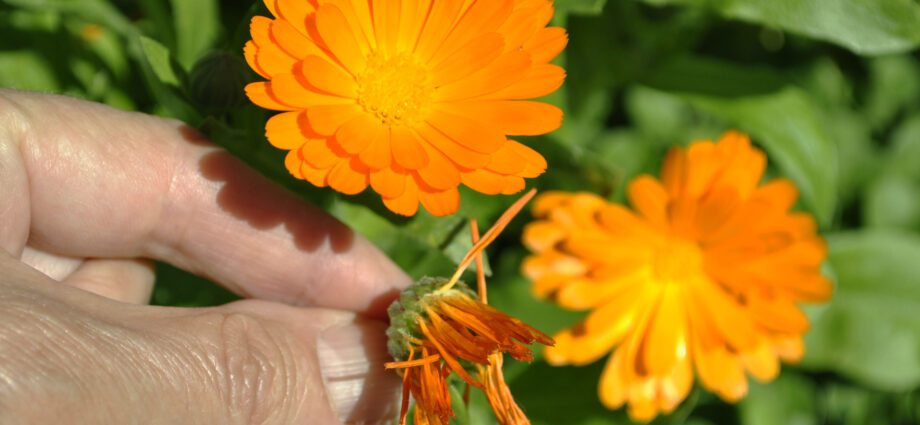Contents
Calendula flowers: planting, growing, care
Bright and sunny flowers of calendula not only delight with their appearance, but are also a valuable medicinal raw material that is used in folk medicine. Useful properties of the plant made it a welcome guest of our homestead plots. In addition, calendula is such an unpretentious culture that even a novice gardener will not be difficult to grow it.
Calendula planting methods and plant care
Calendula is a frost-resistant crop, and it is not afraid of spring return cold. Planting can be done in two ways: by seeds in spring or autumn and by seedling. In the spring, seeds begin to be planted in April. For faster emergence, planting can be covered with plastic wrap. In autumn, seeds are planted in the soil at a depth of at least 3 cm. In this case, the first sprouts will begin to appear in early spring, as soon as the air warms up to –5 ° C.
The brighter the color of the calendula flower, the higher the concentration of nutrients in it.
Stages of growing calendula seedlings:
- For growing seedlings, prepare containers that are suitable for the size and fill them with soil for flowers;
- Plant the seeds to a depth of 1,5-2 cm;
- Cover the containers with transparent foil before germination to create a greenhouse effect;
- After the seedlings get a little stronger, periodically take them out into the open air to harden the plant;
- Plant seedlings in open ground when 5-6 true leaves appear on the plants.
Calendula is a moisture-loving crop, therefore it is recommended to water the seedlings often, preventing the soil from drying out.
Features of growing calendula
Due to its undemanding nature, calendula takes root well even on poor non-chernozem soils. For planting, it is best to choose a well-lit area, while taking into account that the plant does not tolerate drought well. Calendula does not need much care, but it should still be given a little attention.
To obtain voluminous and lush bushes, it is necessary to pinch the main stem at the beginning of plant growth. If faded flowers are removed in a timely manner, you can extend the flowering period until late autumn.
The main requirements for caring for calendula include regular loosening and weeding of the earth. Too thickened plantings are prone to diseases such as powdery mildew and rot. For the prevention of diseases, experts recommend annually changing the planting site and thinning the bushes.
The beneficial qualities of the plant include not only its healing power: calendula helps to ward off various pests of vegetable and berry crops. Many gardeners grow a flower not only in flower beds, but also in beds – this increases the chances of a healthy and strong harvest. By planting this unique plant on your site, you will not only improve your mood, enjoying elegant flowers, but also be able to strengthen your health.










